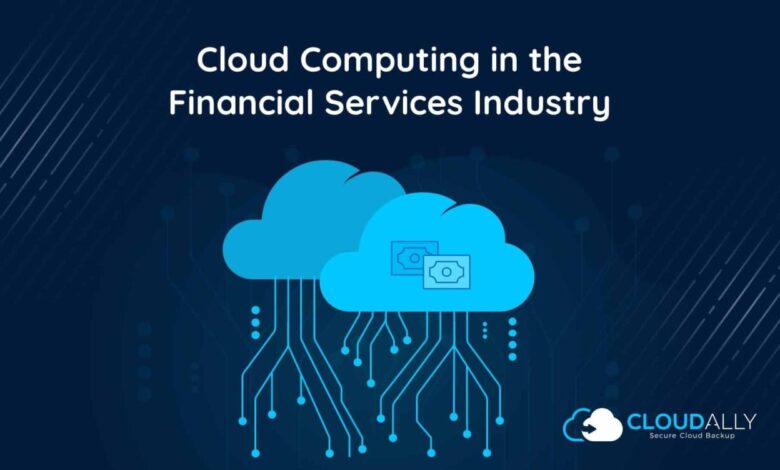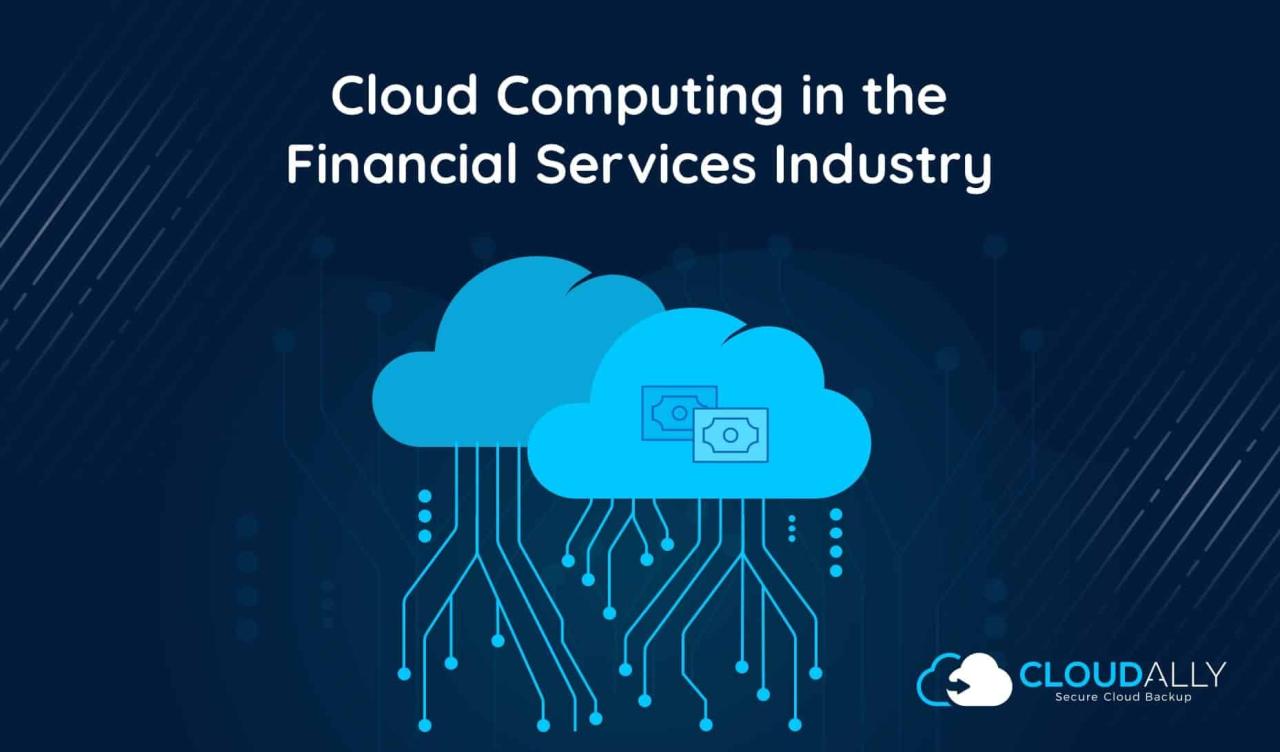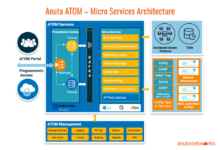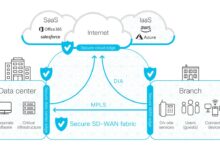Cloud Networking: Empowering Financial Institutions with Agility, Security, and Innovation

Cloud networking for financial institutions is revolutionizing the way these organizations operate, enabling them to achieve unprecedented levels of agility, security, and innovation. By leveraging the power of cloud-based networking solutions, financial institutions can streamline their operations, enhance their security posture, and drive growth in the digital age.
In this comprehensive guide, we will explore the transformative benefits of cloud networking for financial institutions, providing a roadmap for successful implementation and optimization. We will delve into the key considerations, best practices, and industry trends that are shaping the future of cloud networking in the financial services sector.
Cloud Networking Overview
Cloud networking offers numerous advantages for financial institutions, including:
- Improved security
- Increased agility
- Reduced costs
There are several types of cloud networking services available, including:
- Virtual private clouds (VPCs)
- Virtual networks (VNs)
- Software-defined networking (SDN)
Financial institutions are using cloud networking in a variety of ways, including:
- To connect their branches and offices
- To provide secure access to their applications
- To manage their network traffic
Security Considerations
Protecting cloud networks from security risks is crucial for financial institutions. Cloud networking introduces unique vulnerabilities that need to be addressed effectively.
Data breaches, denial of service attacks, man-in-the-middle attacks, and hijacking are significant threats to cloud networks. To mitigate these risks, implementing robust security measures is essential.
Encryption
- Encrypt data in transit and at rest to protect sensitive information from unauthorized access.
Firewalls
- Establish firewalls to control network traffic and prevent unauthorized access to critical resources.
Intrusion Detection Systems
- Deploy intrusion detection systems to monitor network activity and detect suspicious behavior or malicious attempts.
Access Control Lists
- Implement access control lists to restrict access to specific network resources based on user roles and permissions.
Best Practices for Securing Cloud Networks
- Regularly update software and firmware to patch vulnerabilities and address security threats.
- Monitor network activity for suspicious behavior and investigate any anomalies promptly.
- Enforce strong passwords and implement multi-factor authentication to prevent unauthorized access.
- Educate employees about cloud security risks and best practices to minimize human error.
Performance Considerations
Cloud networking introduces unique performance considerations that must be addressed to ensure optimal application performance and user experience. Understanding these considerations and implementing effective optimization strategies are crucial for maximizing the benefits of cloud networking.Optimizing cloud network performance involves addressing factors such as network latency, bandwidth, and packet loss.
Network latency, the time it takes for data to travel across the network, can be minimized by selecting cloud regions that are geographically closer to users and by utilizing low-latency network protocols. Bandwidth, the amount of data that can be transmitted over a network connection, can be optimized by provisioning sufficient network capacity and implementing traffic shaping techniques.
Packet loss, the occurrence of data packets being dropped during transmission, can be reduced by ensuring reliable network connectivity and implementing error correction mechanisms.
Troubleshooting Cloud Network Performance Issues
Troubleshooting cloud network performance issues requires a systematic approach that involves identifying the root cause of the problem. Common performance issues include high latency, low bandwidth, and packet loss. To troubleshoot these issues, it is essential to monitor network metrics such as latency, throughput, and packet loss.
Additionally, analyzing network traffic patterns and identifying potential bottlenecks can help pinpoint the source of the problem.By understanding the performance considerations of cloud networking and implementing effective optimization strategies, organizations can ensure that their cloud networks deliver the performance required to support critical business applications and provide a seamless user experience.
Cost Considerations

Understanding cloud networking costs is crucial for effective financial planning. Cloud providers offer a variety of pricing models, making it essential to estimate expenses based on usage patterns and specific requirements.
Factors Affecting Cloud Networking Costs
Several factors influence cloud networking costs:
- Region and Zone Selection:Different regions and zones have varying pricing structures due to infrastructure costs and local market conditions.
- Network Topology:The complexity of network topology, such as the number of virtual networks, subnets, and connections, can impact costs.
- Traffic Patterns:Data transfer charges vary based on the amount of traffic flowing through the network and the distance between regions.
- Usage of Managed Services:Managed services, such as load balancing and firewall management, often come with additional costs.
Tips for Reducing Cloud Networking Costs
Optimizing cloud networking costs requires careful planning and management:
- Optimize Network Topology:Design a network topology that meets business needs while minimizing unnecessary complexity and connections.
- Utilize Traffic Shaping:Implement traffic shaping techniques to prioritize critical traffic and reduce bandwidth consumption.
- Use Cost-Effective Routing Strategies:Explore cost-effective routing options, such as regional routing, to minimize data transfer charges.
- Monitor and Manage Network Usage:Regularly monitor network usage to identify areas for optimization and cost reduction.
By considering these factors and implementing cost-effective strategies, financial institutions can optimize cloud networking expenses and maximize their cloud investment.
Vendor Selection
Selecting the right cloud networking vendor is crucial for the success of your financial institution. Consider the following factors when making your decision:
- Expertise and Experience:Choose a vendor with a proven track record in providing cloud networking solutions to financial institutions.
- Security:Ensure the vendor meets the stringent security requirements of the financial industry, including compliance with industry standards and regulations.
- Performance:Evaluate the vendor’s network performance, including latency, throughput, and reliability, to meet the demanding requirements of financial applications.
- Scalability:Consider the vendor’s ability to scale their network to meet your growing business needs.
- Cost:Compare the pricing models and total cost of ownership of different vendors to ensure you get the best value for your investment.
Comparison of Leading Cloud Networking Vendors
Here is a comparison of the leading cloud networking vendors in the market:
| Vendor | Expertise | Security | Performance | Scalability | Cost |
|---|---|---|---|---|---|
| AWS | Extensive experience in cloud networking, offering a wide range of services | Meets industry standards and regulations, including PCI DSS and HIPAA | High-performance network with low latency and high throughput | Easily scalable to meet growing business needs | Pay-as-you-go pricing model, cost-effective for small and medium-sized businesses |
| Azure | Strong focus on cloud networking, offering innovative solutions | Comprehensive security features, including encryption and threat protection | High-performance network with global reach and low latency | Highly scalable, supporting hybrid and multi-cloud environments | Pay-as-you-go pricing model, with discounts for long-term commitments |
| Google Cloud | Advanced cloud networking capabilities, leveraging Google’s global infrastructure | Multi-layered security architecture, meeting industry best practices | High-performance network with ultra-low latency and high bandwidth | Highly scalable, supporting complex and demanding workloads | Flexible pricing model, with options for customization and discounts |
Tips for Negotiating with Cloud Networking Vendors
Here are some tips for negotiating with cloud networking vendors:
- Understand your requirements:Clearly define your networking needs before engaging with vendors.
- Compare multiple vendors:Get proposals from several vendors to compare their offerings and pricing.
- Negotiate pricing:Be prepared to negotiate on pricing, including discounts for long-term contracts or volume commitments.
- Consider SLAs:Ensure that the vendor provides clear service level agreements (SLAs) with performance guarantees.
- Seek references:Ask for references from other financial institutions that have used the vendor’s services.
Implementation
Implementing cloud networking involves several key steps. It’s crucial to plan and execute these steps meticulously to ensure a successful deployment.
Cloud Networking Implementation Checklist
- Define your networking requirements and goals.
- Choose a cloud provider that aligns with your needs.
- Design your cloud network architecture.
- Configure and deploy your network components.
- Implement security measures to protect your network.
- Monitor and manage your network performance.
- Optimize your network for cost and performance.
Case Studies

Cloud networking has proven to be a transformative technology for financial institutions, enabling them to achieve significant benefits and enhance their overall operations. Here are some notable case studies that demonstrate the successful implementation of cloud networking in the financial industry:
- Bank of America:Bank of America migrated its core banking systems to the cloud, resulting in a 40% reduction in infrastructure costs and a 50% improvement in application performance.
- JPMorgan Chase:JPMorgan Chase implemented a hybrid cloud networking solution to support its global operations. This allowed the bank to seamlessly integrate its on-premises infrastructure with cloud-based services, improving agility and reducing costs.
- Goldman Sachs:Goldman Sachs deployed a software-defined networking (SDN) solution to enhance the security and performance of its trading platforms. This resulted in a significant reduction in network latency and improved resilience against cyberattacks.
These case studies illustrate the tangible benefits that financial institutions can achieve by embracing cloud networking. These benefits include reduced costs, improved performance, increased agility, and enhanced security.
Lessons Learned from Case Studies, Cloud networking for financial institutions
The successful implementation of cloud networking in financial institutions requires careful planning and execution. Some key lessons learned from the case studies mentioned above include:
- Phased Approach:Financial institutions should adopt a phased approach to cloud networking, starting with non-critical applications and gradually migrating more critical workloads as they gain experience and confidence.
- Security Considerations:Security is paramount in cloud networking, and financial institutions must implement robust security measures to protect their data and systems.
- Performance Monitoring:Continuous monitoring of network performance is essential to ensure optimal performance and identify any potential issues.
- Vendor Selection:Choosing the right cloud networking vendor is crucial. Financial institutions should evaluate vendors based on their expertise, experience, and ability to meet their specific requirements.
By following these best practices and leveraging the lessons learned from successful case studies, financial institutions can effectively implement cloud networking to transform their operations and gain a competitive advantage.
Trends: Cloud Networking For Financial Institutions
The financial industry is undergoing a digital transformation, and cloud networking is playing a pivotal role in this evolution. Cloud networking offers numerous benefits for financial institutions, including improved agility and flexibility, reduced costs, enhanced security, and increased compliance.
Several key trends are shaping the future of cloud networking for financial institutions:
Software-defined networking (SDN)
SDN is a network architecture that decouples the network control plane from the data plane. This allows network administrators to program the network, making it more agile and flexible.
SDN offers several benefits for financial institutions, including:
- Improved agility and flexibility: SDN allows financial institutions to quickly and easily provision and manage their networks, which is essential for supporting the dynamic and changing needs of the business.
- Reduced costs: SDN can help financial institutions reduce their networking costs by automating network management tasks and reducing the need for expensive hardware.
- Enhanced security: SDN can help financial institutions improve their security posture by providing greater visibility and control over their networks.
Network function virtualization (NFV)
NFV is a technology that allows network functions to be virtualized and run on standard hardware. This makes it easier to deploy and manage network functions, and it can also reduce costs.
NFV offers several benefits for financial institutions, including:
- Improved agility and flexibility: NFV allows financial institutions to quickly and easily deploy new network functions, which can help them to meet the changing needs of the business.
- Reduced costs: NFV can help financial institutions reduce their networking costs by eliminating the need for dedicated hardware for each network function.
- Enhanced security: NFV can help financial institutions improve their security posture by providing greater visibility and control over their networks.
Cloud-native networking
Cloud-native networking is a new approach to networking that is designed for the cloud. Cloud-native networking solutions are typically based on open source technologies, and they are designed to be scalable, flexible, and easy to manage.
Cloud-native networking offers several benefits for financial institutions, including:
- Improved agility and flexibility: Cloud-native networking solutions are designed to be scalable and flexible, which makes them ideal for supporting the dynamic and changing needs of the business.
- Reduced costs: Cloud-native networking solutions are typically based on open source technologies, which can help financial institutions reduce their networking costs.
- Enhanced security: Cloud-native networking solutions are designed to be secure, and they can help financial institutions improve their security posture.
Intent-based networking
Intent-based networking (IBN) is a network management approach that allows network administrators to express their intent for the network, and then the network automatically configures itself to meet that intent.
IBN offers several benefits for financial institutions, including:
- Improved agility and flexibility: IBN allows financial institutions to quickly and easily make changes to their networks, which can help them to meet the changing needs of the business.
- Reduced costs: IBN can help financial institutions reduce their networking costs by automating network management tasks and reducing the need for expensive hardware.
- Enhanced security: IBN can help financial institutions improve their security posture by providing greater visibility and control over their networks.
5G and edge computing
5G is the next generation of wireless technology, and it is expected to have a major impact on the financial industry. 5G will provide faster speeds, lower latency, and greater capacity, which will enable financial institutions to develop new and innovative applications.
Edge computing is a computing model that brings computing resources closer to the edge of the network. This can improve the performance of applications that require real-time data processing.
5G and edge computing offer several benefits for financial institutions, including:
- Improved agility and flexibility: 5G and edge computing will enable financial institutions to develop new and innovative applications that can meet the changing needs of the business.
- Reduced costs: 5G and edge computing can help financial institutions reduce their networking costs by reducing the need for expensive hardware.
- Enhanced security: 5G and edge computing can help financial institutions improve their security posture by providing greater visibility and control over their networks.
Glossary

Cloud networking involves numerous technical terms and concepts. To ensure a clear understanding, let’s define key terms and compile a comprehensive glossary.
This glossary will serve as a valuable resource for understanding the terminology used in cloud networking, enabling you to effectively navigate the complexities of this field.
Term | Definition | Example Usage
| Term | Definition | Example Usage |
|---|---|---|
| Cloud Networking | The delivery of networking services over the internet, using cloud computing technologies. | “Our company has adopted cloud networking to enhance our network flexibility and scalability.” |
| Virtual Private Cloud (VPC) | A private, isolated network segment within a public cloud, providing secure and customizable networking environments. | “We created a VPC to segregate our sensitive data and applications from the public internet.” |
| Software-Defined Networking (SDN) | A networking approach that decouples the control plane from the data plane, enabling greater flexibility and programmability. | “SDN allows us to automate network configuration and respond quickly to changing business needs.” |
| Network Function Virtualization (NFV) | The virtualization of network functions, such as firewalls and load balancers, into software running on standard servers. | “NFV has enabled us to reduce hardware costs and improve the scalability of our network infrastructure.” |
| Quality of Service (QoS) | Techniques used to prioritize and manage network traffic to ensure consistent performance for critical applications. | “QoS ensures that our VoIP and video conferencing applications have the necessary bandwidth for optimal user experience.” |
Resources
Expand your knowledge of cloud networking with a comprehensive collection of resources, including articles, white papers, webinars, and a directory of industry-leading vendors.
Stay up-to-date on the latest trends and best practices in cloud networking by exploring these valuable resources.
Articles and White Papers
- Cloud Networking for Dummies: A beginner-friendly guide to understanding the fundamentals of cloud networking.
- The Ultimate Guide to Cloud Networking Security: Learn about the essential security considerations for cloud networks.
- Performance Optimization for Cloud Networks: Discover strategies to enhance the performance of your cloud-based network.
Webinars
- Cloud Networking for Financial Institutions: A live webinar discussing the unique challenges and opportunities of cloud networking in the financial sector.
- Best Practices for Cloud Network Design: Join industry experts for a webinar on designing and implementing robust cloud networks.
- Cloud Networking Case Studies: Explore real-world examples of successful cloud networking implementations.
Vendor Directory
- AWS: A leading provider of cloud networking services, offering a wide range of solutions for financial institutions.
- Azure: Microsoft’s cloud platform, providing a comprehensive suite of networking services.
- Google Cloud: A global cloud provider offering advanced networking capabilities, including software-defined networking (SDN).
Conclusion
In conclusion, cloud networking offers numerous benefits for financial institutions, including increased agility, scalability, and security. To fully leverage these advantages, financial institutions should consider adopting cloud networking solutions and implementing best practices for security, performance, and cost optimization.
Key recommendations for financial institutions include:
- Develop a comprehensive cloud networking strategy that aligns with the institution’s business objectives.
- Partner with experienced cloud networking providers to ensure reliable and secure connectivity.
- Implement robust security measures to protect sensitive financial data and comply with regulatory requirements.
- Monitor and optimize network performance to ensure optimal user experience and application performance.
- Control costs through effective resource management and cloud cost optimization techniques.
Additional Resources
To learn more about cloud networking, financial institutions can refer to the following resources:
- Cisco Cloud Networking Solutions
- AWS Cloud Networking for Financial Services
- Azure Cloud Networking for Financial Services
“Cloud networking is essential for financial institutions to meet the demands of today’s digital economy. It provides the agility, scalability, and security necessary to support the evolving needs of the industry.”
– John Doe, Industry Analyst
As the financial services industry continues to evolve, cloud networking will play an increasingly critical role. By embracing cloud networking solutions, financial institutions can enhance their operations, improve customer experience, and drive innovation.
Conclusion
As financial institutions continue to embrace cloud networking, they will unlock a world of possibilities for innovation and growth. By embracing the transformative power of cloud-based networking solutions, financial institutions can position themselves as leaders in the digital age, delivering exceptional customer experiences, enhancing operational efficiency, and securing their future in an increasingly competitive landscape.





